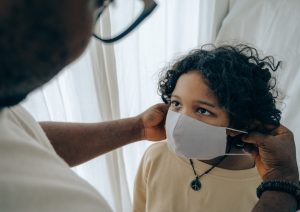LatinaLista — Earth Day is one of those global observances meant to unite all of humanity behind a worthy mission. It doesn’t get much worthier than realizing that the only home of us all needs to be cared for — just like the people who inhabit it.
Unfortunately, for people of color, Earth Day is just another stark reminder of how unequal life is for certain communities. According to data from the Earth Day Network’s National Civic Engagement Project:
Residents of “at risk” urban neighborhoods are exposed to higher levels of air and water pollution and are more likely than their suburban counterparts to live near power plants or waste sites. 80% of Hispanic-Americans and 71% of African-Americans live in areas that fail to meet one or more EPA air quality standards (as compared to 57% of Caucasians). African-Americans from 5- 34 years of age are five times more likely to die of asthma than Caucasians.
This type of disparity is referred to as environmental racism. One of the leading voices in heightening awareness for this issue is Dr. Benjamin F. Chavis, Jr. In the following opinion editorial originally published in January 2011 in The Cincinnati Herald, Dr. Chavis explains environmental racism, how it is impacting certain communities and why it is the next big civil rights movement waiting to happen.
Environmental racism 2011
The worldwide struggle for environmental justice and equality continues. While many advances have been made globally in defining, researching, and confronting the realities of environmental racism, here inside the United States there are still far too many African Americans, Latino Americans, Pacific Islander and Asian Americans, Native Americans and others who remain disproportionately exposed to environmental hazards, toxins, cancer-causing pollutions, and other life-threatening environments.
Of course, there are more than one contributing factor to these circumstances: economic, social, political, and geographical. But, one of the most “determinative” factors is the issue of race.
The whole history of denial when it comes to issues of racial discrimination in the U.S. remains true. Tragically, those who are the victims of these types of injustices are often denied the possibility for adequate redress and resolution.
In other words, challenging “environmental racism” in 2011 should be one of the top priorities for the U.S. government as well as for state and local governments.
But, we all know well from prior experiences, that effective governmental corrective action and meaningful public policy changes only happens when there is an effective and sustainability movement for freedom, justice, and equality around the specific issue at hand.
Thus, we must build a stronger environmental justice movement in the U.S. and establish strategic organizational alliances at the United Nations and with other grassroots environmental justice organizations internationally. It will take stronger movements for change to get all governmental bodies to seek greater environmental justice.
Most of the 15 million weekly readers of the National Newspaper Publishers Association, America’s Black Press, should recall that it took many years before the federal government would even admit the existence of environmental racism.
Under Presidents Reagan and Bush, the Environmental Protection Agency (EPA) in the 1980’s and 1990’s refused to acknowledge this social problem. By February 1994 President Clinton issued Executive Order 12898 on Environmental Justice that gave the environmental justice movement an official federal status. Today, the EPA has an ongoing Office for Environmental Justice.
Due to my prior work with the United Church of Christ Commission for Racial Justice and my background as a chemist, I was fortunate back in 1982 to first coin the term environmental racism: “Racial discrimination in the deliberate targeting of ethnic and minority communities for exposure to toxic and hazardous waste sites and facilities, coupled with the systematic exclusion of minorities in environmental policy making, enforcement, and remediation.”
President Barack Obama is no stranger to this issue. When he was a state senator from Illinois, he worked with others to challenge environmental injustices in places like Altgeld Gardens located deep on the Southside of Chicago. Hazel Johnson, an African American grassroots leader from Altgeld Gardens became one of the strong effective national “mothers” of the environmental justice movement.
Today, we must press forward without relenting. Literally, millions of African American, Latino, and other minorities are suffering from an increase in multiple forms of cancer and other diseases as a direct results of unjust and terrible exposures to environmental dangers.
That is why we must oppose any attempt to scale back health care coverage and reform in the United States. Millions of lives are at stake.
Let’s work with the EPA today and the Obama Administration to get more relief and to establish better living conditions for our families and communities across the nation.
2011 should be a year for more progress. Don’t let the negative, cynical forces of reaction take us backward. Yes, there are many different issues and priorities that will demand our attention and energy. It is in the context of our overall struggle for justice and empowerment that I am reminding us not to forget about the air we breath, the water we drank, and the environment where we live.
Racism in all of its deadly forms must be challenged.
Dr. Benjamin F Chavis Jr. is Senior Advisor to the Black Alliance for Educational Options and President of Education Online Services Corporation.





